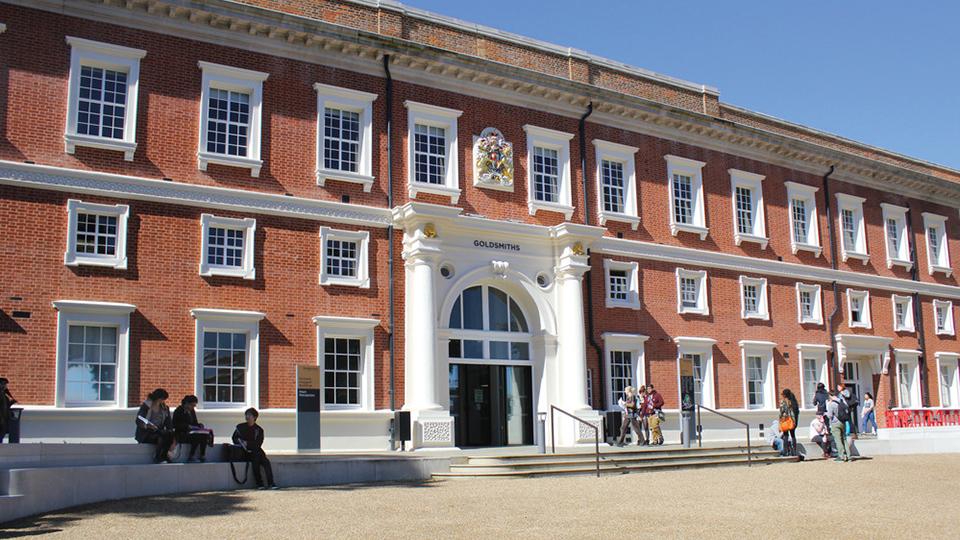Annual reports and financial statements 2019-20 published
Primary page content
Goldsmiths, University of London has today published its annual reports and financial statements for the year ended 31 July 2020.

Annual Report and Financial Statements 2019-20 (PDF) show that the College faces a number of challenges, particularly those associated with the impacts of the Covid-19 pandemic, although also as a result having gone into the 2019/2020 academic year with an underlying deficit (pre Covid-19 forecast) of £9m.
The publication, which presents Goldsmiths’ financial results for the academic year 2019/2020, shows that total income fell by 2% to £130 million, mainly due to the impacts of Covid-19 on our student accommodation, resulting in refunds of summer-term accommodation fees totalling £2.3 million.
This is compounded by an 8.5% growth in expenditure to £147 million as staff costs grew, including costs relating to increases in USS pension contributions.
The overall underlying deficit was £14.3 million. Net cash inflow was £1.9 million – down from £9.8 million the previous year.
When reviewing this set of annual reports and financial statements it is important to note that they include a one-off credit of 16.9 million in connection with the 2018 valuation of the USS pension scheme (compared to a charge of £23.7 million in 2019).
Due to its size and unusual nature, this has been excluded from the analysis of expenditure above.
There was also a non-cash charge of £2.5 million related to the liability on the LPFA pension scheme, but as this is smaller and tends to recur annually on a relatively even basis, this has been included in the analysis below.
These are essentially accounting technicalities which apply to all HE providers that are part of these pension schemes. They are explained in more detail in a note at the end of this article.
Taking this into account, the College’s total expenditure decreased £29m to £130.3 million, a decrease dominated by the charge of £23.7m relating to the 2017 USS scheme valuation being replaced with the £16.9 credit relating to the 2018 USS valuation. These one-off pension accounting movements lead to a reported deficit of £0.1 million for the year ended 31 July 2020, a figure which is not reflective of the overall underlying deficit (£14.3 million).
Where our money comes from
Our income was £130 million for the academic year 2019/2020.
Our main income source is tuition fees with funding body grants, research grants and other income forming the total:
- Tuition fees – 77%
- Funding council grants – 9%
- Research grants and contracts – 4%
- Other income – 10%
A further breakdown on income can be found in the annual reports and financial statements.
How our money is spent
Our expenditure comprises of staff costs, non-staff operating costs, depreciation and interest costs.
Staff costs represent the biggest expenditure for Goldsmiths, with this increasing 14.2% to £95 million – some 65% of total costs which is above the Higher Education sector average based on the 2018-2019 benchmark.
Goldsmiths spent £70 million on salaries, £13 million on employer pension contributions and £7 million on social security costs, £3 million on voluntary severance payments along with the £2 million deficit recovery charge related to the LPFA pension scheme.
Within the staff cost base, excluding voluntary severance payments and the LPFA deficit recovery charge, some £57 million of this spend is situated in academic departments, including administrative staff, with some £33 million situated in central professional services.
The document shows that total emoluments of the current Warden, who was appointed from 1 August 2019, were £240,000 for the year.
Other areas of investment
The information published today includes details of other areas of investment by Goldsmiths. These include:
- £2.4 million on student bursaries and scholarships
- £1.7 million in block grant, support and support in kind for the Students’ Union – made up of £1.2 million in block grant and support and accommodation and use of the IT network at estimated cost of £0.5 million
- £7.6 million on student and staff facilities. This covers direct student support services, for example the Student Centre, Accommodation Office and Careers Service, along with staff support facilities such as the Staff Development Unit and Occupational Health Service. It does not include administrative support such as the HR department or Registry
The Universities Superannuation Scheme (USS) is the pension scheme that all staff on grades 6 and above are eligible to join. It is a multi-employer scheme and is the principal pension scheme for Universities.
The London Pension Fund Authority Scheme (LPFA) is the pension scheme that all staff on grade 5 and below are eligible to join. It is part of the Local Government Pension Scheme (LGPS).
The 2018 valuation and schedule of contributions for the USS pension scheme was not available in time for inclusion in the 31 July 2019 Financial Statements, so the 2017 valuation and schedule of contributions arising from the Trustee’s so-called Rule 76 contributions was used. This resulted in an increase in the pension provision of £24.0 million to £36.5 million for that year, of which £23.7 million was a charge to expenditure shown within staff costs and £0.3 million within interest payable. The 2018 valuation and schedule of contributions has since been finalised and resulted in a reduction in the provision of £16.3 million to £20.2 million, of which £16.9 million is a non-cash credit to expenditure shown within staff costs and £0.6 million a charge within interest payable.
The Annual Reports and Financial Statements are normally published and submitted to the Office for Students every December. As a result of Covid-19 the statutory deadline for publication was extended for the higher education sector. In addition to this the College was given further time for submission to enable refinancing negotiations and agreements with our banking partners as part of Goldsmiths’ recovery programme.